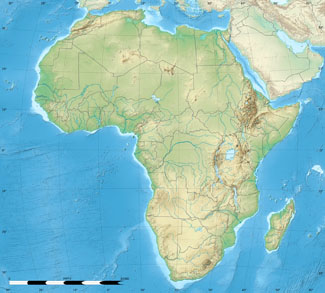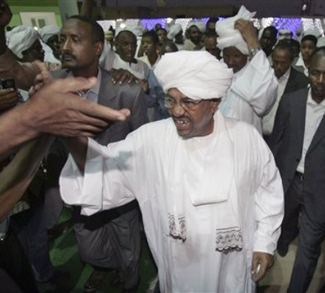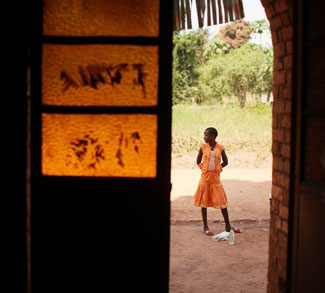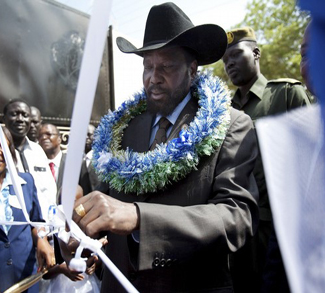Africa is discovering a new spirit of optimism, reminiscent of the first decade of its post-colonial era. Despite inadequate infrastructure and at times even poorer governance, the continent has been attracting more and more interest from American and European investors, as well as Chinese, targeting such countries as Kenya, Nigeria, South Africa, Angola, Tanzania, and Rwanda to name a few. Today, half of the world’s 30 fastest-growing countries are in Africa, which is quickly losing its image of hopelessness and despair. Unfortunately, economic growth, while significant, rarely benefits the impoverished majority, even amid scenes of bustling business taking place from Dakar to Nairobi, and statistics indicating an emerging African middle class of some 150 million – which could quickly rise to 300 million by 2015, barring any ‘black swan’ events. Politically, there is optimism as almost all 55 African countries have some kind of constitution with an active civil society that is contributing to more democratic or pluralistic political engagement. The continent’s two longest lasting internal conflicts (Somalia and Congo) persist; even if at a lower intensity, while two newer ones (Mali, Central African Republic) continue unabated. However, considering that from 1998-2003, the conflict in the Democratic Republic of Congo and its neighbors left some three million dead, the 2,000 registered ‘military’ deaths recorded in 2013 suggests that 2014 could be one of Africa’s most peaceful in recent history.
Political
Africa continues to show signs of progress that, if pursued and encouraged, will contribute to a positive year ahead. There have been indications that commodity valuations could rise in 2014, which would be a boost for Sub-Saharan Africa in particular. Apart from impressive economic growth, an ever-larger number of African countries have been finding stability and healthier democratic governance thanks to the active role being played by civil society – one of the pillars of what appears to be an African revival.
Some longer term political problem areas remain, such as in Somalia, Eritrea and the DR Congo, while new conflicts are brewing in South Sudan and the Central African Republic. Should tensions persist or worsen in either one of these two countries, Central Africa could see a dramatic security vacuum due to refugee flows and weak state authority; both of which favor regional militant groups like Al-Qaida in the Maghreb (AQIM), Somalia’s al-Shabab, and the Lord’s Resistance Army (LRA). Meanwhile, many other African countries have overcome the physical and social devastation of past decades of civil war and revolts. They include Angola, Mozambique, Sierra Leone, Liberia, Ivory Coast, Rwanda, Uganda, and Chad.
In the past few years, Africa has shown several important institutional improvements: secondary education participation rates have increased by 48%, life expectancy has increased on average by 10%, and the rate of infant mortality in most countries has decreased dramatically. Even gender equality has improved, and according to the Economist, the rate of female participation in primary school has been rising steadily, from 84% to 93% between 1999 and 2010.
Central African Republic Grasps at Democratic Stability
The big political question for Central African Republic (CAR), which is in the midst of a civil war that began in December 2012 and degenerated considerably in late 2013, is whether or not it will have a democratically elected president in 2014. France, which has deployed troops to help stabilize the situation, will certainly push political events in this direction, relying on the backing of regional players who do not wish to see the implosion of CAR; an event that would surely produce a ripple effect throughout Central Africa. The main risk here is that the new elections needed to restore national security could be arranged in a sloppy manner, leading to a spiral of sectarian violence between Christian and Muslim militias that would have dire humanitarian and regional implications.
South Africa Heads to the Polls
In the second half of 2014, the ANC, led by President Jacob Zuma, will face its first electoral test without the ‘moral’ backing of Nelson Mandela, the party’s historic leader. Jacob Zuma, who has several personal scandals under his belt, is still expected to win another five-year term, but his win will probably come by the lowest margin for the ANC since the end of Apartheid. The party could drop below a 60% majority, which has not happened since 1994. Moreover, there is a generation of 20-something black South Africans who were born into democracy and never experienced apartheid, leaving them predictably less attached to ANC. Julius Malema, the former head of the ANC’s Youth League, could seduce them with his populist tone and policies, eating away at Zuma’s votes.
Economic
The prospects for economic growth in Sub-Saharan Africa are positive, and while overall lower prices for mineral commodities (Africa’s main export) put some pressure on revenues in 2013, there is a general consensus that these raw material prices will recover in 2014 and 2015. Progress in reducing poverty in the region remains weak due to an unequal distribution of wealth. According to analysts at the World Bank, the GDP of Sub-Saharan Africa will grow by 4.9% in 2013, 5.3% in 2014 and 5.5% in 2015. Economic development will be supported by strengthening domestic demand and increasing production in the mining, agriculture, and service sectors. Foreign direct investment in Africa has grown in recent years; in 2013 it increased by an estimated 24%, a trend that shows no signs of diminishing. Many governments have increased public investment in energy and infrastructure, allowing for the construction of new ports (for example, in Ethiopia – via Djibouti – Ghana, Namibia, Niger, Nigeria, South Africa, Tanzania, Uganda, and Zambia) in an attempt to increase competitiveness. Much of the financial and technical support for these projects has come from larger developing countries such as China, Brazil, and India, among others.
The effort to diversify exports has so far produced weak results and the continent is still exposed to substantial risk in the event of a significant reduction in international prices. This dynamic is particularly salient for oil-rich countries (Angola, Nigeria, Cameroon, and Equatorial Guinea) but it also affects countries rich in agricultural resources like cotton, cashew nuts, coffee, and tobacco. China has been absorbing large shares of African production and export markets remain undiversified. Finally, the tourism sector, which presents some of the highest growth potential, has shown positive signs, especially in the Sub-Saharan region. The OECD predicts that by 2021, tourism could provide jobs for 6.7 million people. The most successful countries in 2013 were Cape Verde, Kenya, Mauritius, Namibia, Rwanda, South Africa, and Tanzania. In fact, these countries have liberalized air transport and diversified tourist offererings, all the while preserving their environment and creating incentives for private investment seeking a high rate of return. Many large international hotel chains are working on initiatives to benefit from this increasing demand from foreign tourists and the African middle class.
Military
On the military level, the focus remains on peacekeeping efforts to manage regional conflicts and tensions, often characterized by tribal, ethnic, and religious issues. Moreover, international military missions will continue to be deployed in 2014 to combat maritime piracy (in the Gulf of Guinea as well as the Gulf of Aden off the coast of Somalia), transnational crime, smuggling, trafficking in human beings, smuggling of arms and drugs, and terrorism. Regional conflicts and geopolitical shifts in North Africa over the past three years have increased such risks, while brewing internal conflicts in South Sudan and the Central African Republic could further destabilize the Sub-Saharan region, with repercussions – especially due to refugee flows – in Uganda, Democratic Republic of Congo, Kenya, and Tanzania. France, since it became directly involved in crushing the Islamists who took over northern Mali in 2012, has continued to play the main international military role in central Africa.
Central African Republic on the Brink
In 2013, a coalition of largely Seleka Muslim rebels seized power in Bangui, triggering tribal killings and looting that inevitably led to attacks by Christian militias. There is a risk of genocide as Christian militias have been targeting Muslims since December 2013. France may increase its involvement in CAR and the United States, worried by regional consequences, has also promised military aid for the international peacekeeping coalition.
France is bound by international covenants such as the Cotonou Agreement to help pacify internal and transborder conflicts within its former colonies, and it has taken a primary role in forming the African force needed to manage the conflict in the Central African Republic. Where the deployment of troops is not suitable, France has committed to contributing technical expertise and equipment. In this sense, President Francois Hollande has pledged to train 20,000 African soldiers per year – where his predecessor, Nicolas Sarkozy, trained some 12,500. France is actually training an international force to manage conflicts, an ‘African Army,’ and promising adequate material support. It is keen to retake a dominant role – or interest – in its former colonies. In December, the management of the African peacekeeping force for the Central African Republic (MISCA) was officially transferred from the Economic Community of Central African States (ECCAS) to the African Union (AU). However, the lack of trust in any African force’s ability to manage peacekeeping was what originally prompted French military intervention and what will, ultimately, keep France engaged in the conflict.
South Sudan’s Civil War
Unfortunately, Africa will still garner attention for atrocities in 2014. The deputy secretary-general of the United Nations for Human Rights, Ivan Simonovic, said there was evidence that child soldiers were engaged in the fighting in South Sudan. The two sides in South Sudan’s civil war have continued fighting through the first weeks of 2014 even as ceasefire talks between the rebels, led by former vice-president Riek Machar, and the government progressed in the Ethiopian capital of Addis Ababa. Fighting is centered on the strategic city of Bor, the capital of the South Sudanese state of Jonglei. The city is currently held by the rebels, but it has changed hands three times since the beginning of hostilities last December. The clashes have also spread to the oil producing state of Upper Nile.
The Sudan People’s Liberation Army is one of the best trained in Africa and it is prepared to press on in the conflict against the rebels, who insist that no ceasefire will be possible unless the central government releases their 11 allies who were arrested before the fighting began. The fighting has already left hundreds dead and produced some 200,000 refugees according to the UN. More than 30,000 people have fled the country, finding refuge in Uganda in particular. Because the conflict has taken a tribal dimension – between President Salva Kiir’s Dinka tribe and Riek Machar’s Nuer – it will be more difficult to quell, and organized sectarian killings remain a threat in the year to come.
For more information on South Sudan’s civil war, click here.




